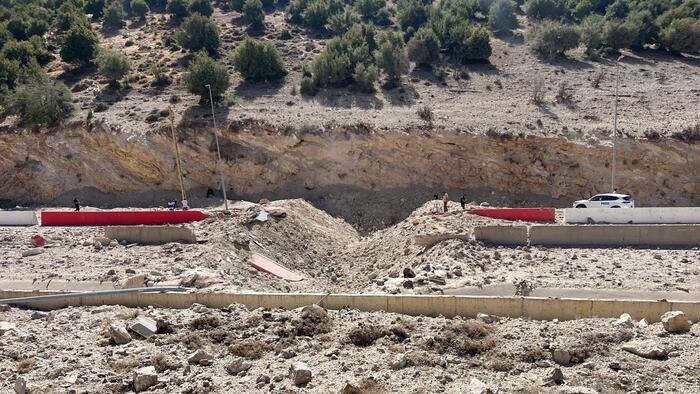On October 4, 2024, the Masnaa border crossing between Lebanon and Syria was severely damaged by an Israeli airstrike, prompting it to close and forcing individuals fleeing violence to make the crossing on foot. Social media captured the chaos as displaced Lebanese and Syrians trekked across the border, illustrating the dire humanitarian crisis resulting from ongoing hostilities in the region. As the primary point of transit between the two nations, the Masnaa crossing has become a focal point amidst escalating military actions.
The Israeli military claimed responsibility for the airstrike, asserting that it targeted a 3.5-kilometer underground tunnel extending from Lebanon into Syria. This tunnel allegedly facilitates the transfer of weapons from Iran to Hezbollah, the militant group operating in Lebanon. According to statements from the Israeli army, their operations are aimed at dismantling the infrastructure supporting Hezbollah’s arms supply routes, showcasing a strategic military approach designed to curb Iranian influence in the region. Alongside the tunnel strike, Israel also reported the assassination of Mohammad Jaafar Qasir, identified as the head of Hezbollah’s Unit 4400.
The airstrikes against Lebanon have intensified since late September, marking a significant escalation in conflict that has resulted in grave humanitarian consequences. Casualty figures are alarming; reports indicate that at least one million people have been displaced, with approximately 2,000 lives lost since the onset of hostilities on September 20. Continuous military actions by Israel, including aerial bombardments of various locations in Lebanon, have inflicted widespread destruction and exacerbated already existing humanitarian crises. The series of high-casualty airstrikes reflects Israel’s intent to dismantle Hezbollah’s military capabilities and to maintain security for its borders.
Destruction in Beirut has been particularly severe; neighborhoods were reported to have been obliterated during airstrikes that rocked the southern suburbs. Evidence of this bombardment includes multiple loud explosions that were witnessed across the capital, signifying the intensity of Israeli military operations. Reports indicate that civilian infrastructure has been heavily impacted, raising concerns about the rising civilian toll and the future stability of the region.
Prominent figures within Hezbollah have also come under scrutiny as a result of these attacks. Israeli sources have suggested that key operations were aimed at individuals close to the group’s leadership, including Hashem Safieddine, who stands as a possible successor to Hassan Nasrallah, the group’s Secretary-General. The killing of Nasrallah on September 27 by Israeli airstrikes, which deployed over 80 bunker-busting bombs, epitomizes the lethal precision and high stakes of the ongoing confrontation. This elevated targeting of leadership figures within Hezbollah signals a broader strategy by Israel to destabilize the group’s command structure.
The ongoing conflict marks a critical juncture in the Lebanon-Syria relationship and broader regional dynamics. The destruction of the Masnaa border crossing and the Israeli military’s aggressive stance illustrate a volatile situation where humanitarian crises and military strategies intersect. As the death toll rises and displacements increase, the international community faces pressing questions regarding how to address the ramifications of warfare on civilians and the political implications for stability in the Middle East. The airstrike not only highlights the entrenched conflict but also serves as a reminder of the profound human impact of geopolitical struggles in the region.

